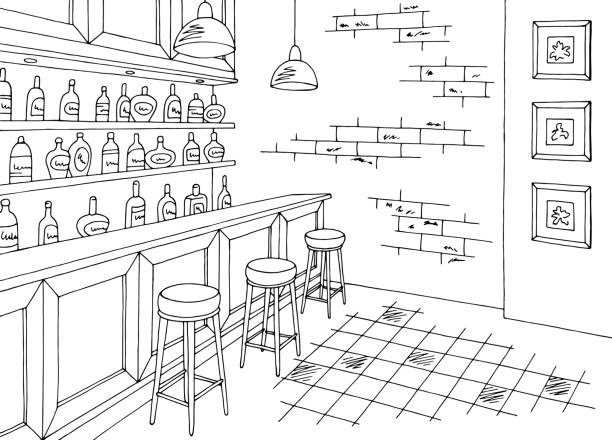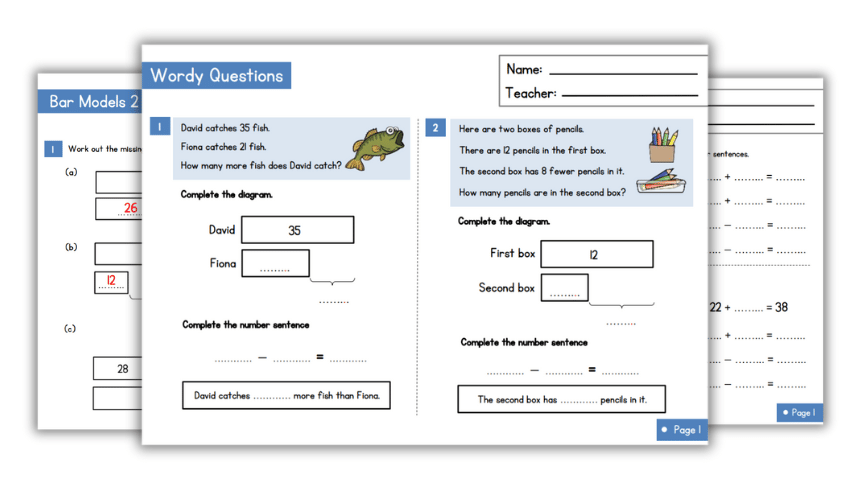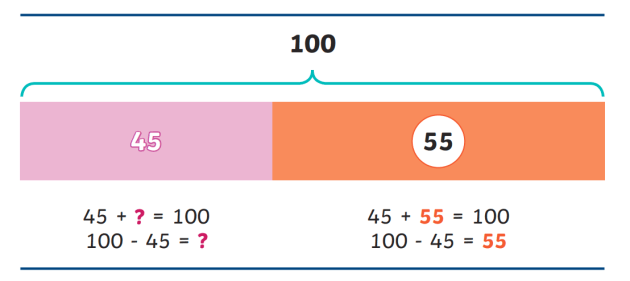Exploring Bar Design Drawing Techniques: A Comprehensive Guide to Visualizing Math Concepts
Bar model drawing techniques function as an important source for both teachers and students in visualizing mathematical concepts. These designs simplify complex numerical connections, helping in the comprehension of enhancement, multiplication, division, and subtraction. This guide describes effective techniques for applying bar versions, cultivating energetic interaction and real-world connections. As viewers check out the sensible applications and mentor suggestions, they will certainly uncover how these strategies can change their strategy to maths.
Comprehending the Essentials of Bar Version Drawing
Bar version drawing acts as an effective visual device in maths, promoting the understanding of numerical relationships and problem-solving approaches. This technique involves standing for numbers and their relationships with rectangular bars, making it simpler to envision operations such as enhancement, reduction, division, and reproduction. Each bar's length represents a certain value, permitting learners to contrast quantities and understand proportions plainly.
To create a bar design, one starts by identifying the problem's key aspects, frequently breaking it down right into parts that can be visually represented. For instance, in a basic enhancement problem, two bars can be drawn, with their lengths representing the addends. The combined length shows the sum. On top of that, bar models can be adapted for a lot more complex issues, consisting of portions and ratios, by changing benches appropriately. Grasping these fundamentals lays a strong structure for efficient analytical and much deeper mathematical comprehension.
Benefits of Utilizing Bar Designs in Math
Making use of bar designs in mathematics offers countless benefits that improve discovering and understanding. These visual depictions help trainees in comprehending complex ideas by breaking them down right into workable elements. Bar models give a clear structure for showing relationships between numbers, making abstract concepts much more concrete. They promote a deeper understanding of mathematical operations and assist in analytical by enabling students to visualize the information they are collaborating with.
Bar models sustain the advancement of crucial assuming skills, as students need to analyze and interpret the aesthetic information to draw final thoughts. This method motivates energetic engagement with the material, strengthening retention and proficiency of mathematical concepts. By promoting a solid structure in aesthetic literacy, bar versions empower learners to approach various mathematical difficulties with self-confidence. Generally, the combination of bar designs right into mathematics education and learning proves useful in growing both understanding and logical capacities among pupils.
Applying Bar Designs to Enhancement and Subtraction
Bar versions offer as an effective tool for visually representing addition and reduction problems. By showing the partnership between numbers, they improve understanding and help with problem-solving. In enhancement, real-life applications of these designs can help learners realize mathematical concepts in useful contexts.
Representing Enhancement Aesthetically
When pupils encounter enhancement and reduction troubles, aesthetic help can considerably boost their understanding of these operations. Bar models function as effective tools for representing enhancement. By splitting a rectangular shape right into sections that represent the numbers entailed, pupils can picture the relationship between the amounts. For example, if a pupil needs to add 3 and 5, they can create a bar split right into 2 sections: one area representing 3 and the various other representing 5. This clear representation not only streamlines the addition process however likewise enhances the idea of incorporating amounts. As students control these aesthetic aids, they develop a deeper comprehension of addition, leading to enhanced analytical abilities and greater self-confidence in their mathematical abilities.
Subtraction With Bar Versions
Although reduction is frequently viewed as a more intricate procedure than enhancement, bar versions can effectively clarify this process for students. By visually representing the quantities included, students can better comprehend how numbers associate with each other. In a bar design for subtraction, one bar represents the total, while an additional indicates the quantity being deducted. This visual difference assists trainees comprehend the principle of "removing." For instance, if a bar reveals 10 systems, and one more bar representing 4 units is removed, students can conveniently see that 6 systems stay. This technique not only fosters understanding of reduction yet additionally help in establishing analytical abilities, permitting trainees to imagine their mathematical thinking and boost their general comprehension of mathematical concepts.
Real-Life Application Examples
Understanding reduction through bar designs lays a foundation for using these methods in real-life situations. In different contexts, such as budgeting or shopping, people can envision just how much cash remains after costs. For circumstances, if an individual has $50 and invests $20, a bar design can stand for the overall amount and the invested part, illustrating that $30 is left. In addition, parents can make use of bar models to aid kids understand the amount of even more things need to be included in complete a collection, such as having 3 apples and needing 5. This graph streamlines complicated problems, promoting comprehension and retention. Inevitably, bar designs act as effective tools in daily decision-making, enhancing mathematical understanding in functional scenarios.
Visualizing Reproduction and Department With Bar Versions
In checking out the application of bar models for reproduction and department, it is necessary to comprehend their foundational concepts. Constructing multiplication models enables students to visualize connections in between numbers, while effective division strategies can be illustrated through these visual help. This approach enhances understanding and problem-solving abilities in maths.
Recognizing Bar Versions
Bar models work as a powerful visual tool for highlighting the ideas of multiplication and division. They enable students to stand for mathematical relationships in a structured style, promoting a deeper understanding of these operations. In reproduction, bar versions show teams of equal size, allowing individuals to imagine the total quantity when integrating these groups. Alternatively, in division, bar models aid show how an overall is split into smaller, equivalent components, clarifying the concept of partitioning. By utilizing these aesthetic aids, trainees can comprehend the underlying principles of multiplication and division better. This approach not just improves comprehension however additionally supports analytic abilities, making bar versions an indispensable possession in mathematical education and learning.
Building Multiplication Models
Building multiplication models utilizing bar diagrams supplies a clear approach for picturing the process of here reproduction. These designs make it possible for students to represent multiplication as teams of equal components, making abstract principles much more concrete. For example, to show (3 times 4), a student can attract one bar divided into 3 equivalent segments, each standing for 4 devices. In addition, developing a second bar with the exact same length reinforces the understanding of repeated enhancement, as each section represents one group. This graph not only aids in grasping multiplication yet additionally enhances problem-solving skills. By employing bar versions, pupils can much better understand relationships between numbers and create a durable structure for extra complex mathematical concepts, causing raised confidence in their capabilities.
Visualizing Division Strategies

Resolving Word Problems Making Use Of Bar Version Techniques

As an example, in an issue involving addition and subtraction, pupils can attract different bars for each and every amount and then manipulate them to locate the remedy. This process not just clears up the problem however also cultivates a deeper theoretical understanding. Moreover, bar models can be adjusted for different sorts of word problems, making them functional across different mathematical topics. Ultimately, utilizing bar models can significantly boost trainees' problem-solving abilities by giving a clear aesthetic pathway to get to the correct answer.
Integrating Bar Versions in Different Mathematics Topics
Bar versions can be perfectly incorporated into various math subjects, improving trainees' understanding of principles beyond standard math. In algebra, these visual devices aid in representing formulas and inequalities, enabling learners to envision relationships in between variables. When dealing with geometry, bar versions can illustrate the residential properties of forms and spatial thinking, helping students realize ideas like location and border effectively. In data, bar models assist in the analysis of information sets, enabling trainees to contrast quantities and recognize patterns visually. Furthermore, incorporating bar designs within dimension subjects help in understanding units and conversions by supplying a concrete depiction of amounts. By utilizing bar versions across various mathematical areas, instructors can cultivate a deeper comprehension of complex principles, therefore boosting analytic abilities and advertising vital thinking (bar model drawing techniques). This convenience shows the energy of bar designs as a foundational device for trainees in their mathematical journey
Tips for Training Bar Models Efficiently
Integrating bar versions right into teaching practices calls for thoughtful approaches to maximize their efficiency. Educators ought to start by presenting bar versions with simple, relatable instances that pupils can quickly understand. This aids to develop confidence and knowledge with the concept. Progressively boosting the complexity of troubles enables students to use their abilities gradually. In addition, teachers ought to urge pupils to produce their very own bar versions, promoting energetic interaction and possession of their knowing.
Integrating joint activities can additionally boost understanding, as trainees review and resolve troubles in teams. Constant responses is vital; instructors must provide useful discourse on trainees' bar model representations to lead renovation. Lastly, connecting bar designs to real-life scenarios reinforces their significance, aiding students see the useful applications of their mathematical skills. By implementing these strategies, instructors can successfully harness the power of bar versions in their mathematics guideline.
Frequently Asked Questions
Can Disallow Models Be Utilized in Various Other Topics Besides Mathematics?
Bar models can indeed be made use of in various subjects past mathematics. They effectively highlight concepts in science, social studies, and language arts, helping to aesthetically represent relationships, processes, and concepts for improved understanding throughout self-controls.
What Age Team Is Finest Fit for Discovering Bar Designs?
Bar designs are best suited for youngsters ages 7 to 12, as they develop concrete reasoning abilities during this duration (bar model drawing techniques). At this age, pupils can properly realize abstract principles through graph and analytic methods
Are There Digital Tools for Creating Bar Versions?

Just How Can I Examine Student Understanding of Bar Models?
Evaluating student understanding of bar designs can involve tests, empirical assessments, and team conversations. Teachers might likewise examine trainees' completed versions and their capability to describe their reasoning, guaranteeing a detailed evaluation of understanding.
What Are Typical Errors When Using Bar Designs?
Typical errors when utilizing bar designs include misrepresenting quantities, stopping working to properly identify bars, perplexing enhancement and subtraction, ignoring to make use of regular ranges, and ignoring the significance of clear visual separation in between various aspects.
In addition, bar designs can be adjusted for much more complicated issues, including ratios and portions, by changing the bars accordingly. Reduction is frequently viewed as a much more complex operation than addition, bar designs can successfully clarify this process for trainees. In a bar version for subtraction, one bar represents the total amount, while one more suggests the amount being subtracted. If a bar reveals 10 devices, and an additional bar standing for 4 systems is eliminated, pupils can easily see that 6 systems remain. When separating an overall into equivalent groups, pupils can draw a long bar to represent the entire and then sector it right into smaller sized bars that indicate each group.